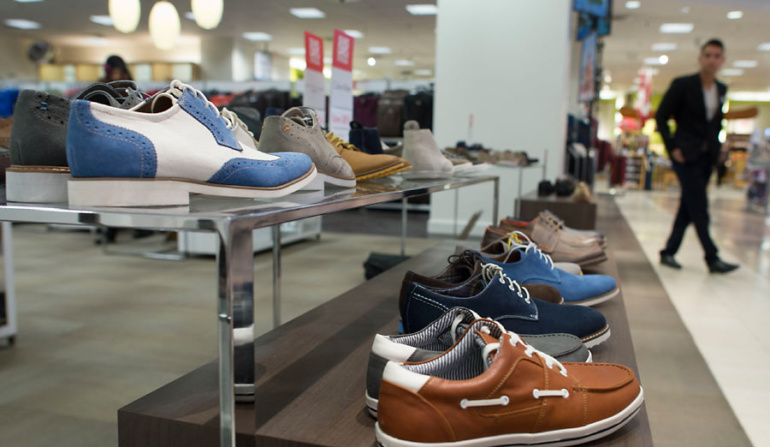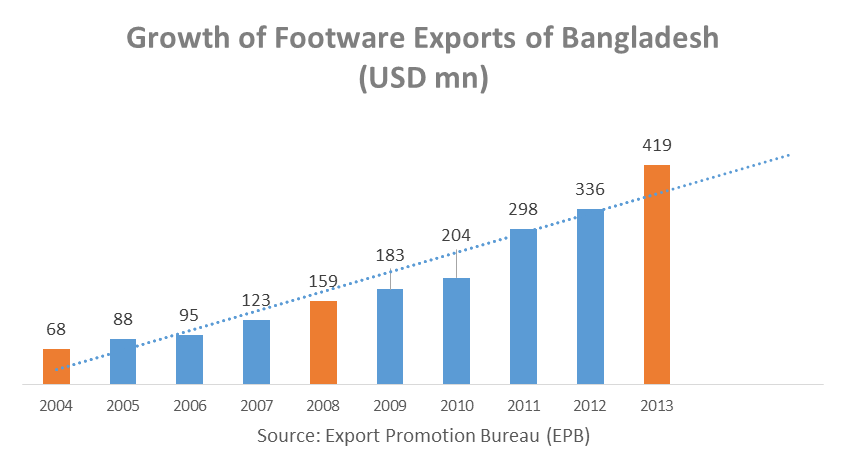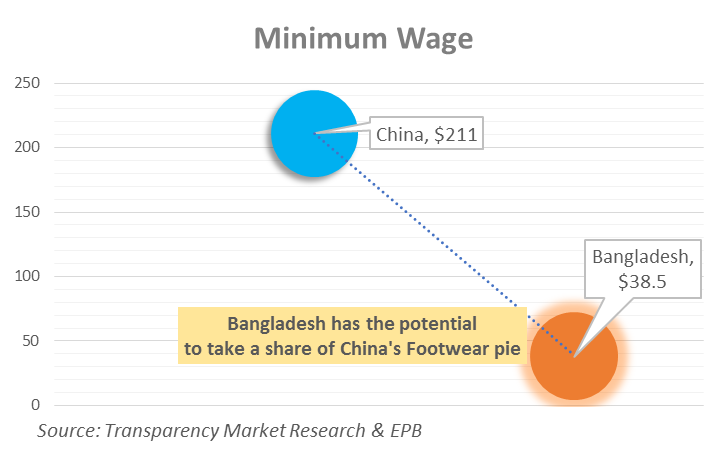GET IN TOUCH
- Please wait...

Although Bangladesh export basket is heavily skewed towards RMG export, several new sectors have cropped up over the last decade. Footwear is one such sector which has tremendous potential to significantly boost country’s export while diversifying the economy’s export basket.
Global Footwear Industry is at an upward trajectory
Given rising global demand for footwear which is expected to reach USD 211 Billion by end of 2018. (Source: Transparency market research), Bangladesh has the potential to tap into the growing market by offering quality output.

Bangladesh’s Footwear Export is growing
Bangladesh’s footwear export has doubled during 2010-13 and continues to rise further as illustrated below. Bangladesh is involved in export of components at various stages of footwear value chain ranging from raw materials to work-in-progress such as soles and finished goods like shoes.

Eyeing the Global Leather Market

The sector has been growing over the last 5 years with exports increasing by 46% in 2011 followed by healthy 25% growth in 2013. Recently, total export has exceeded USD 1 billion mark for the leather sector which has been due to rising global demand and renewed interest amongst local entrepreneurs for manufacturing footwear. Some international investors have forayed in the sector setting up factories in local Export processing Zones (EPZs).

As illustrated above, Bangladesh has the potential to accommodate relocating footwear units from China, due to Bangladesh’s inherent input cost advantages. However, Bangladeshi labor needs to undergo the learning curve to improve their efficiency and productivity.
Bangladesh has a distinct advantage in footwear production as it is involved in all stages of the value chain from raw leather to the final product. The annual export of these components is expected to reach a value of USD 5 Billion within the next decade.
Leather Sourcing will be a Competitive Advantage
Bangladesh produces superior quality leather from local livestock, which is subsequently processed by tanneries concentrated around the capital city. These inputs are then transformed into final products including footwear whose exports stood at USD 419 Million as of 2013. (Source: EPB)
The annual production of leather hovers around 250 Million square feet each year with supply peaking during the religious festivals of Eid. In 2013 the supply of rawhide stood around 7 Million pieces with the tanneries struggling to keep up with the supply.
Bangladesh has Robust Backward Linkages
In Bangladesh, incoming raw hides are sorted and processed in tanneries that are concentrated in the outskirts of the capital in Hazaribagh. These entities have come under criticism for being environmentally unfriendly prompting the government to build a 200 acre Leather Industrial Park in Savar including utilities at a cost of USD 60 Million. The park will include state of art Effluent Treatment Plants (ETPs) as well to treat the waste generated while processing the leather in the tanneries. 50% of the construction has already been completed. Additionally, leather industry is considered blue-chip by Bangladesh Bank (BB) and recently the central bank has given leather industry a boost with relaxing policies for shifting to Savar so that footwear sector can flourish.
The Asian Market to drive Demand
The domestic market in Bangladesh has potential for growth as well. This is due to rising per capita income which has recently passed the USD 1,000 mark. In addition, the economic conditions of the countries in this region is changing rapidly with increasing economic growth translating to higher per capita income and in turn, more purchasing power. This is going to pull the demand for products such as footwear upward as they move from being a necessity to a more brand and status oriented product.
This Sector Report is a part of LightCastle Partners’ Analytics Wing
Do you want consumer/market data on your preferred sector? Please fill out the form and we’ll get back: https://docs.google.com/
Our experts can help you solve your unique challenges
Stay up-to-date with our Thought Leadership and Insights